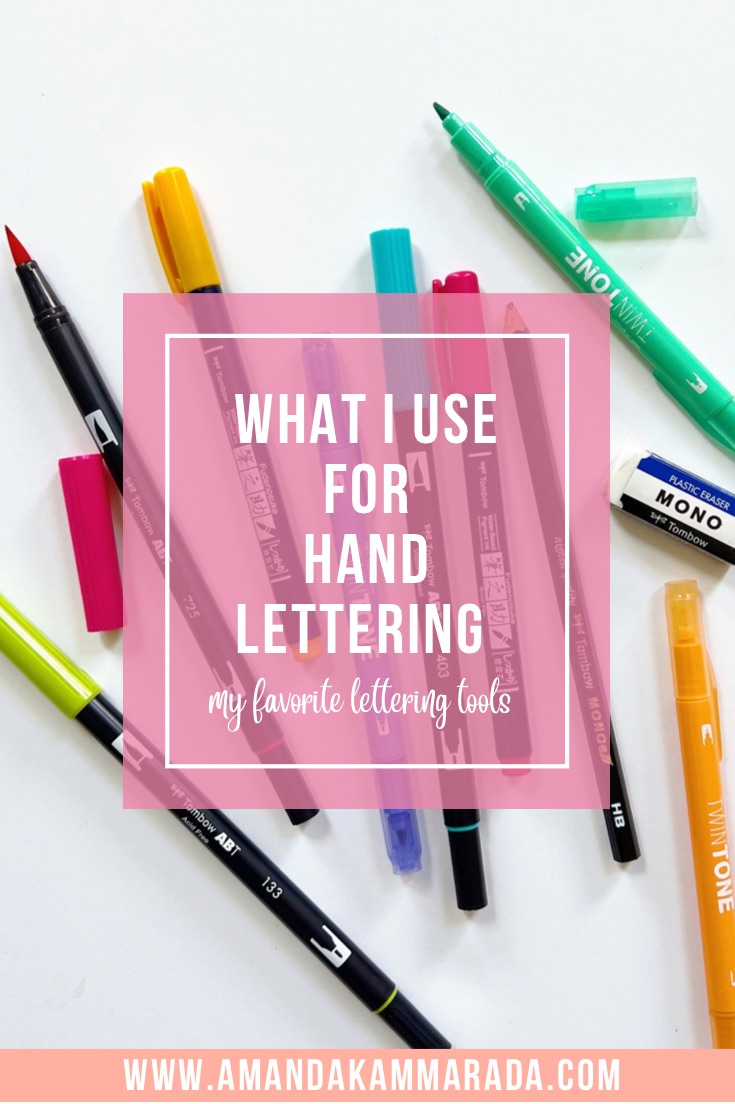
*Please note: this post contains affiliate links. Amanda Kammarada is an affiliate for Amazon and TombowUSA*
There are a lot of hand lettering tools available, which can make it difficult to figure out which ones to buy. Every artist is different and prefers certain brands and types of pens and paper. It’s important to find out what works for you and it’s okay if it’s different from me. To help you get started on which tools to try, here’s what I use for hand lettering.
Pencil & Eraser
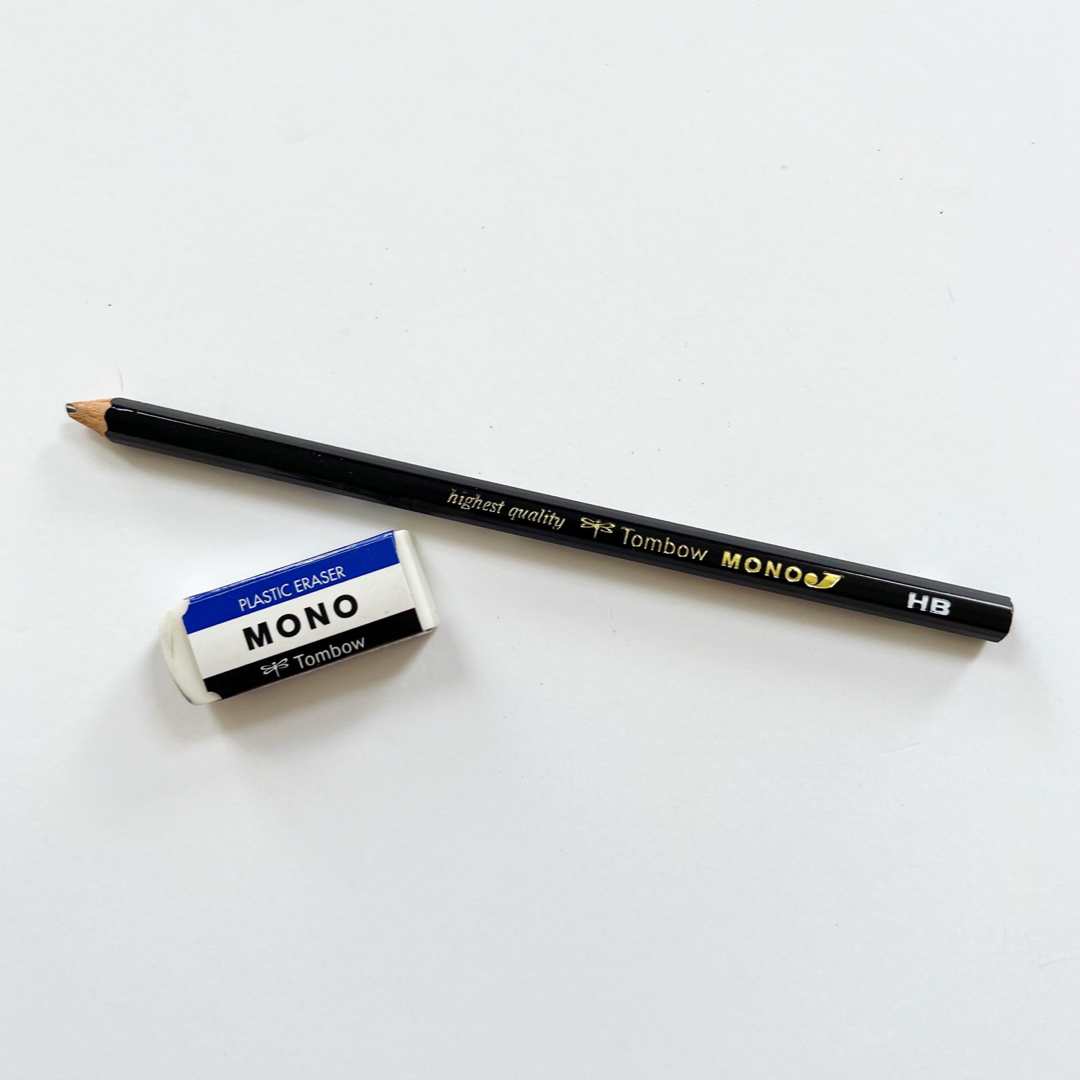
Having a good pencil and eraser is an important part of your lettering tool box. You can practice letter forms, connecting letters and sketching out compositions with a pencil. Pencils come in different grades of hardness. On drawing pencils you’ll see numbers/letters, like HB or 2H. I prefer to use an HB. The “H” stands for ”hardness” and the ”B” is for ”blackness”. This is a fairly soft pencil that glides along the paper and creates a dark line. Compare that to a 4H which isn’t as soft and you’ll feel a difference drawing with it. The Tombow MONO J drawing pencils (as well as the regular MONO pencils) are my favorite. They are smear-proof, easy to sharpen and draw so smoothly. After you’ve found a pencil you like, you’ll need a great eraser. The Tombow MONO eraser is my number one. It erases easily, won’t rip your paper, doesn’t smudge ink and is made of plastic instead of rubber. You will love it!
Fine-line Markers

A fine-line pen or marker differs from a brush pen (more on brush pens later). These markers have a tip that has only one thickness. My most usedmarkers are the Tombow TwinTones. They come in 36 colors and have two tip sizes- broad or extra-fine. I use these for monoline lettering and faux calligraphy. They are perfect for envelope art, cards and more. They are also great for embellishments & illustrations.
Brush Pens

Are you looking for a good brush pen? Then look no further than the Tombow Fudenosuke. These magical brush pens come in a hard or soft tip. That describes the flexibility of the tip. If you’re a beginner, I recommend the hard tip, but I do encourage you to try both and see which one feels better to you. This is a small-tipped brush pen which differs from the Dual Brush Pen, see below, which has a larger tip. The Fudenosuke comes in many colors, including neon. Please note that the colored Fudenosukes are only available as a hard tip. Black comes in soft and hard. These small-tipped pens are great for small-scale lettering, like envelopes, cards or artwork where the text is smaller.
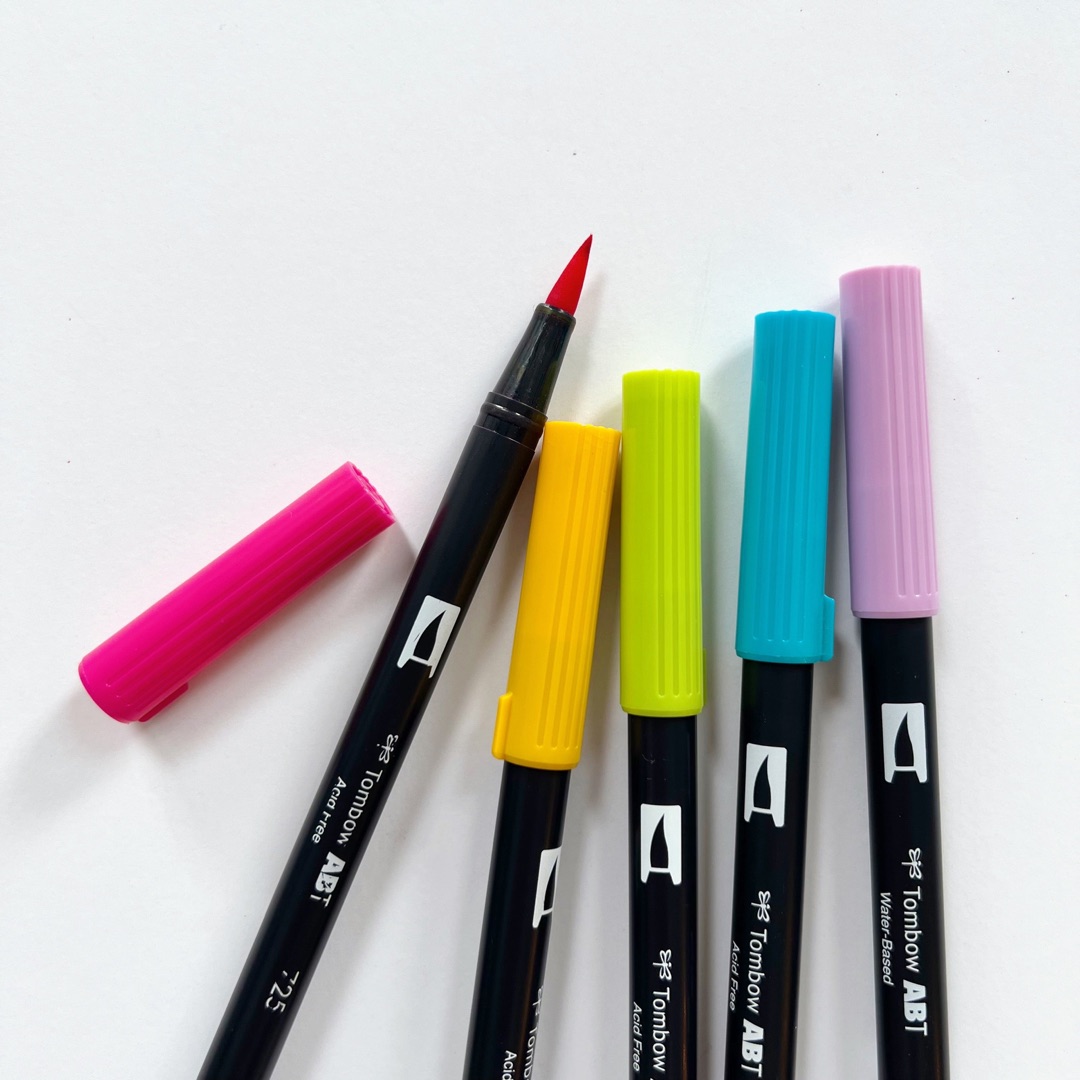
The Tombow Dual Brush Pen was the first pen I fell in love with. This pen has two tips- a large brush tip and bullet tip for fine-lines. They are available in 108 individual colors and come in various themed color packs.
Paper

The paper you use should match what type of pen/art you are making. Since brush pens and markers are my most used tools, I use Canson Marker paper (purple cover) most often. It’s a smooth surface which is perfect for brush pens. It’s also see-through, which is perfect for laying over top of your sketch when you want to use color for your final piece. Tracing paper (yellow cover) is great for practicing. It’s inexpensive, has a smooth surface and is see-through. Place tracing paper over top of practice pages for an easy way to practice.
So, that’s my list of my favorite lettering tools that I use on a daily basis. What do you use daily? What tools are your favorite? Let me know in the comments below!
💛 Amanda

In case you missed it- My new book is now available! The Creative Lettering Journal with Inspirational Quotes offers seven unique lettering styles along with inspirational quotes to practice. As well as insights & questions to reflect upon. All the lettering tools mentioned above work great with this book. Order yours here.
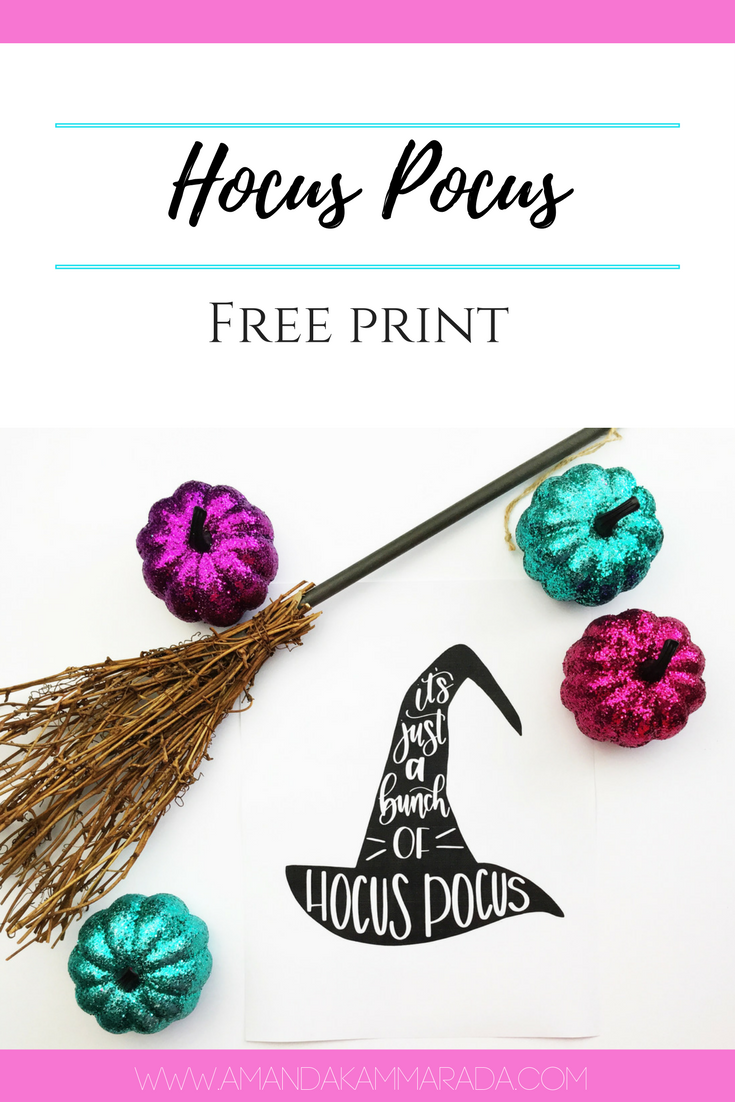 Hocus Pocus Free Print
Hocus Pocus Free Print How To Do Faux Calligraphy
How To Do Faux Calligraphy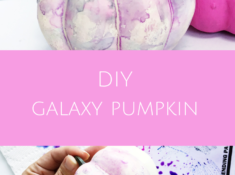 DIY Galaxy Pumpkin
DIY Galaxy Pumpkin